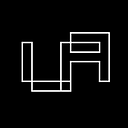UniArts: A New Canvas For NFTs

From musicians to graphic designers, to performers and everything in and far from between, NFTs were a life-changer. Upon introduction they blew up in the world of art, and soon, everything that could exist in a digital format was seen being sold as an NFT.
However, despite making it much simpler to sell their works, and despite all the hype surrounding it, it wasn’t as simple as people thought it was; artists still needed some level of fame to be able to find buyers, and while NFT platforms were a great place to buy and sell, they generally weren’t the best place to grow and gain some recognition.
UniArts is a different matter. Apart from being an NFT marketplace, it is also a decentralized NFT gallery aimed at democratizing art, and supporting the mutually beneficial relationship between artists and connoisseurs on its platform.
How it Works
At the heart of it all is UniArts’ native token: UART. When a work is ready to be made into an NFT, the artist uses the provided SDK plug-in tools to make that happen. These tools support a variety of popular mainstream editing software such as Photoshop and Final Cut Pro.
In order to create NFTs, a work has to be bound with a curator node (validator node), after which, nominators can vote on their preferred NFTs. The nominators are those who stake UARTs, and by voting on the works they prefer, they receive staking rewards — but more importantly, they participate in the decentralization and democratization of art by voicing what they believe to be good art.
This process is driven by a concept referred to as Nominated Proof-of-Stake, or NPoS. In the case of UniArts, there are four roles that make this process happen: The creator, the curator, the nominator and the fisher.
The creator is the artist, the one creating the NFTs, and in order to bind their work with curator nodes, they will need the help of the curator. The curator stakes UARTs, and sets up nodes waiting to be bound with an NFT to get elected as validators. The nominator also stakes UARTs, and votes on the NFT, and to make this entire process secure, the fisher looks out for and slashes misbehavior such as offline nodes or impersonators.
The Result
The result is a platform where the popularity of the art is determined by the masses, and not a centralized group; an auction house and gallery accessible by everyone, where works are appreciated, bought and sold.
Works that see a rise in popularity receive extra grants and support on top of the normal rewards they earn when they obtain votes. This can result in much needed incubation for talented artists who can produce works that are loved by the community.
Beyond Small Artists
While the focal point of UniArts is enabling new artists, its platform is also open for both established artists and businesses alike. By cooperating with businesses or their representatives, they can offer a one-stop solution for enterprise users to transfer their or their clients’ intellectual properties like books, soundtracks, artwork etc, into NFTs, and follow them up with transaction and auction services.
This can serve to raise funds for a new project, promote a new and upcoming work, support a small studio of creators, or just to interact with fans and give away memorabilia.
To Conclude
Exposing your work to the world has always been a difficult task, but with each step of technological advancement, it has become an easier process, and UniArts may be the next step that lifts artists higher.
By establishing a connection between artists and connoisseurs and providing incentives for engagement, UniArts promotes decentralization on its platform, and the eventual democratization of arts for a community of those who create and appreciate them.
